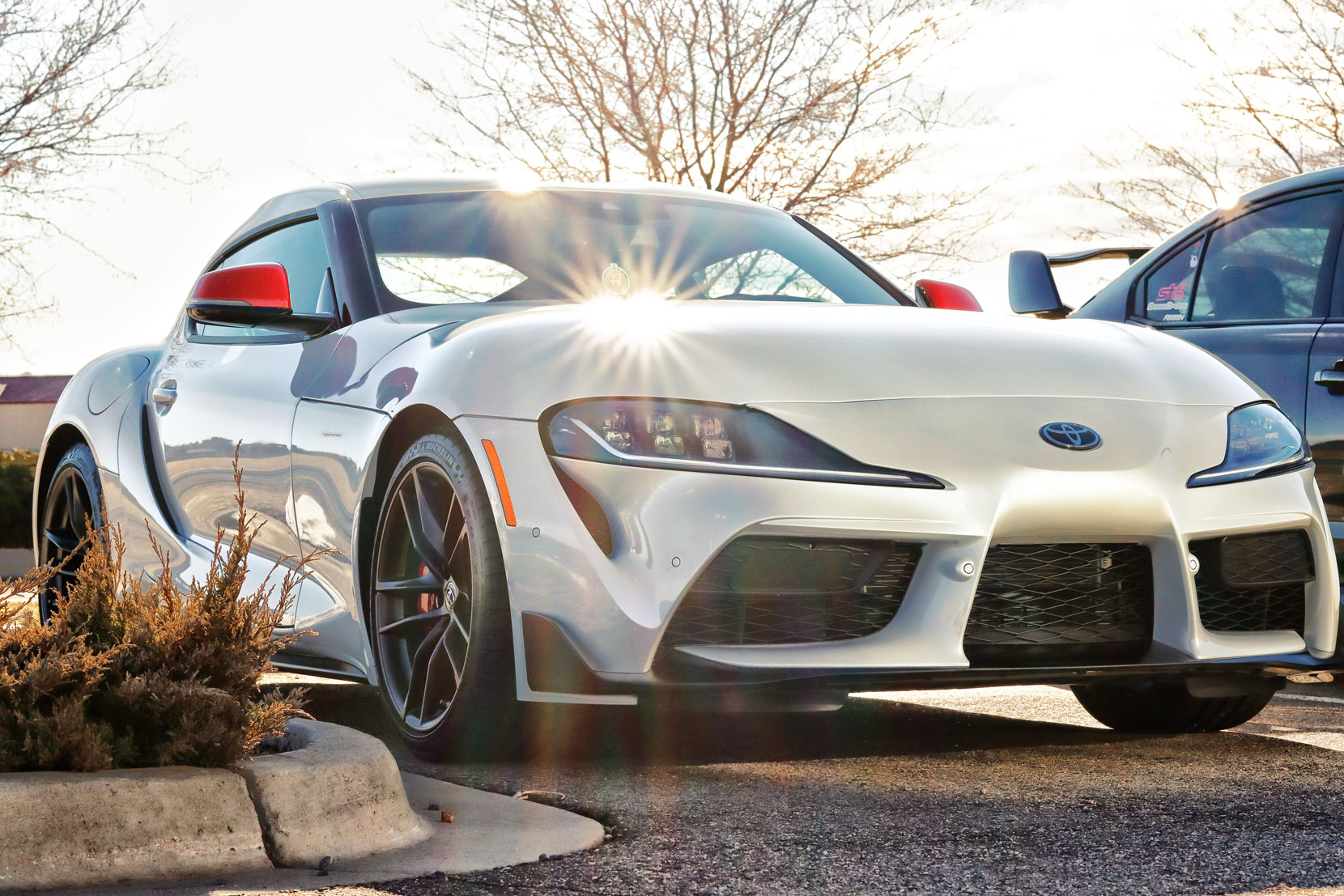If you’re wondering what happened to the “my classic car” series I started this year, I have run out of photographs of my interesting cars to feature. I’m looking for images of my 1968 Porsche 912 but so far have come up empty handed. I have images of my 2002 W Golf Mark IV 337 but it’s not 25 years old and other than the Mark 1 GTI, I wonder if any Golf could be considered a classic.
Today’s Post by Joe Farace
You’re safer in the race car than you are in cars going to and from the track. —Mario Andretti
The Sigma 56mm f/1.4 DC DN lens has on my Canon EOS M6 Mark II, a multiplication factor of 89.6mm but it’s not just useful for shooting portraits. I like to photograph cars with longer than normal focal length lenses because I like the perspective they = provide for cars such as the featured image.
The 56mm f/1.4 DC DN is part of Sigma’s Contemporary series of lenses and is designed for use with Sony, Fuji, Nikon Z. Micro Four-thirds and Canon’s now-defunct EF-M mount mirrorless cameras that was used to make today’s featured image.
Many of us still love that camera series and my EOS M6 Mark II is my go-to camera for shooting video. It’s bright f/1.4 maximum aperture is ideal in low-light conditions and also affords maximum control over depth-of-field for selective focus effects.

How I made that photograph: When stopping some lenses down, especially wide-angle lenses, you can get sunstars, especially off a white car like this Toyota Supra. The number of spokes in a sunstar depends on the number of diaphragm blades it has. The 56mm f/1.4 has nine blades but here it looks like there are two overlapping sunstars. Exposure for this image was 1/640 sec at f/7.1 and ISO 320 with a plus two-thirds stops exposure compensation to render this white car as white. If I stopped the lens down to f/11 or f/16 I could have made the sunstars sharper (and maybe smaller) but I tend to shoot car shows in Program mode because it seems that somebody’s always walking into your shot and if you wait for perfection, you might wait all day.
 The lens is compact and lightweight (9.88 oz) measuring 2.62 x 2.34-inches. (6.65 x 5.9cm) The focusing ring has a light but not loose, touch for those preferring manual focusing. Minimum focusing distance is 1.64-feet, with bokeh that is relatively but not perfectly smooth. The lens has a fast and quiet stepping AF motor for photo or video applications.
The lens is compact and lightweight (9.88 oz) measuring 2.62 x 2.34-inches. (6.65 x 5.9cm) The focusing ring has a light but not loose, touch for those preferring manual focusing. Minimum focusing distance is 1.64-feet, with bokeh that is relatively but not perfectly smooth. The lens has a fast and quiet stepping AF motor for photo or video applications.
Breathing refers to the shifting of a lens’s angle-of-view when changing focus and the 56mm f/14 lens handles this really well with little or any exaggerated effects.
The lens has a sensibly-sized 55mm filter thread. Rubber sealing is incorporated in the mount making it dust- and splash-resistant, which is more than Canon provides with the EOS M6 Mark II I tested the lens with. The bayonet mount is chrome plated brass and securely attached via four screws. Sigma includes a nice lens hood at no extra cost. Tip: When you think the hood is mounted either conventionally of backwards for storage, remember to give it about another one-eighth turn to lock it firmly in place.
What’s the optical quality like?
The lens design uses one Special Low Dispersion (SLD) element to reduce color fringing and chromatic aberrations. Two aspherical elements limit distortion and spherical aberrations. A Super Multi-Layer Coating was applied to suppress flare and produce contrast-rich and color-neutral images.
Here’s what my well-laid wall of bricks had to say: As with other lenses in this series, wide open the lens is crisply sharp from corner-to-corner with zero vignetting at any aperture. There is not a trace of barrel or pincushion distortion, altogether providing impressive optical performance. I’m not posting another picture of the wall because I don’t want to beat you over the head.this kind of image.
If you enjoyed today’s blog post and would like to buy Joe a cup of Earl Grey tea or maybe a cup of hot chocolate ($2.50), click here. And if you do, thanks so much.